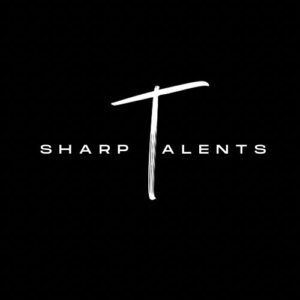Misc Payment Concepts
Now that we have seen how payments and payment processing work in general, we can now move on to understand some payment-related terminologies with some examples. These are crucial to further our understanding of the different payment systems.
SWIFT
SWIFT stands for Society for Worldwide Interbank Financial Telecommunication. It is a co-operative of banks that provide the infrastructure and standards for the exchange of payment messages, especially in the cross-border space. SWIFT has a proprietary message type called MT messages. More about this in the future.

SEPA
SEPA stands for Single Euro Payments Area which was created by the European Union to make the exchange of payment within the EU easy. SEPA deals with only payments in EURO currency. SEPA uses a version of the ISO20022 standard for the exchange of payment messages. More about this in the future.

ISO20022
This is a standard published by the International Standard Organization for the exchange of financial messages. It’s kind of like a guideline. ISO20022 is not limited to XML but can be used with other technologies like JSON or ASN.1. These standards are not limited to payments but can be used for other areas like cards, Securities, Forex, etc. There are close to 800 message types under ISO20022.
SWIFT is a major contributor for developing the ISO standard.
IBAN
IBAN stands for International Bank Account Number it is an internationally accepted system to identify a bank account and it follows ISO 13616:2020. These are unique throughout the world. Not all countries have adopted IBAN that includes the US and India. It is mostly used in Europe and middle east but other countries are slowly adapting to it. For SEPA payments IBAN is Mandatory.

Each country has its own account number and it’s called BBAN (Basic Bank Account Number). SWIFT helped in the development of the standards for IBAN. There are 3 parts to an IBAN
- ISO country code (ISO 3166) – 2 Char
- Check Digit – 2 Digit
- BBAN – Up to 30 alphanumeric Char
Check digits are used by banks to check the validity of IBAN.
Example:
BE71 0961 2345 6769
BIC
Many people think BIC stands for Bank Identifier Code but it actually stands for Business Identifier Code and it follows ISO 9362. These codes are used to identify both financial and non-financial institution and they are unique.
A BIC can be 8 or 11 characters in length. For 11 char BICs the last 3 characters represent the branch.
A BIC consists of 4 parts:
- business party prefix – 4 alphanumeric Char (Mandatory)
- The country code as defined in ISO 3166 – 2 Char (Mandatory)
- business party suffix – 2 alphanumeric Char (Mandatory)
- branch identifier – 3 alphanumeric Char (Optional)
Example: CITIUS33123
Domestic payments do not generally use BICs but they use their national clearing codes instead. SWIFT publishes the list of BICs as part of the file BANKDIRECTORYPLUS.
RMA
RMA stands for Relationship Management Application. It was introduced by SWIFT to stop unwanted messages from reaching a bank that may put an additional burden on the operations teams. It’s a way to stop unwanted messages at the source i.e. the sender should have an RMA with the receiving bank in order to send SWIFT messages. The type of messages that can be sent can also be restricted eg. Sender can be restricted to only 1 series message. The predecessor to RMA was something called BKE (Bilateral key exchange).
Example:
Let us say you are a bank and you want to receive only 1 series of MT messages from another bank. You give them permission to send only 1 series message and that will reflect in their RMA. When they try to send a 2 series MT message to you then it will be stopped at their end.
Accounting relationship
This one is pretty straightforward. If you (a BANK) maintain a NOSTO/VOSTRO account with another bank and you can clear funds bilaterally with them then it means that you have an accounting relationship with that bank. We have discussed more this in our accounting entries article.
Payment Market Infrastructure
PMIs are nothing but the clearing and settlement systems that help financial institutions move funds. They are the high-value payment system /RTGS system, low-value payment systems (ACH), and real-time payment systems. They are the center of both domestic and cross-border payment systems.
Cut-Off
As a bank, we need to know when the operation time of other banks (in different time zones) and PMIs close so that we will not send payments after their closing hours. Whenever we send payments outside (outgoing), the bank’s payment engine checks the cut-off time and If the cut-off has passed the payment will be sent the next day (Generally).
Payment dates
There are several dates that are associated with payments and here is a list. We will know about them in detail in the future. If you are too curious then kindly use google to figure out what they are.
- Interbank settlement date
- Credit value date
- Debit Value date
- Processing date
- Send date
- Exposure date
- Booking date
- Requested credit value date
- Requested execution date
Value date – It is the date on which the value of the funds becomes effective. The warehouse feature of a payment engine deals with a lot of these dates. FX can also alter some of these dates.
SSI
SSI stands for Standing Settlement Instruction. These are agreements with other banks on how to settle funds. It will tell you who the EUR correspondent of the receiver bank is ? so that you can route the payment with them. I will explain why it’s done this way.




Blog Comments
NAGARAJ SUSURLA RAMASUBBARAO
June 18, 2021 at 3:30 pm
Love it
Madhu S
June 21, 2021 at 3:41 am
Very nicely consolidated 👏👏
Santosh
June 21, 2021 at 2:33 pm
Thank you
Great work
June 23, 2021 at 7:05 am
Very nice article
Santosh
June 23, 2021 at 11:59 am
Thank you
Shreya Kamath
June 23, 2021 at 3:08 pm
Very much informative
Dharini
June 24, 2021 at 2:44 pm
Superb
Theo
July 24, 2021 at 5:38 pm
I am a technical guy from Ghana that wants to start adding functional to my roles . Your blog has been nothing but simple and explanatory. I have worked with a lot of these but your posts has given me enough “functional” explanations to understand a lot of things. Thanks
Santosh
July 24, 2021 at 6:05 pm
Thank you so much 🙂
forex
August 15, 2021 at 7:51 am
Every weekend i used to visit this website, as i wish for enjoyment, for the reason that this this
website conations truly fastidious funny information too.
Geetha
September 24, 2021 at 6:21 pm
Very nicely articulated with simple words.
Awesome job Santhosh. Keep rocking.
Santosh
September 25, 2021 at 9:07 am
Thank you
Archana Bhave
January 9, 2022 at 5:26 am
I am big fan Jean Paul . Your also doing fab job I have gone through MT 103 video. Appreciate a lot . Keep doing .
Santosh
January 13, 2022 at 3:02 pm
Jean-Paul was my payments guru. He was my manager at one point. He inspires all of us.